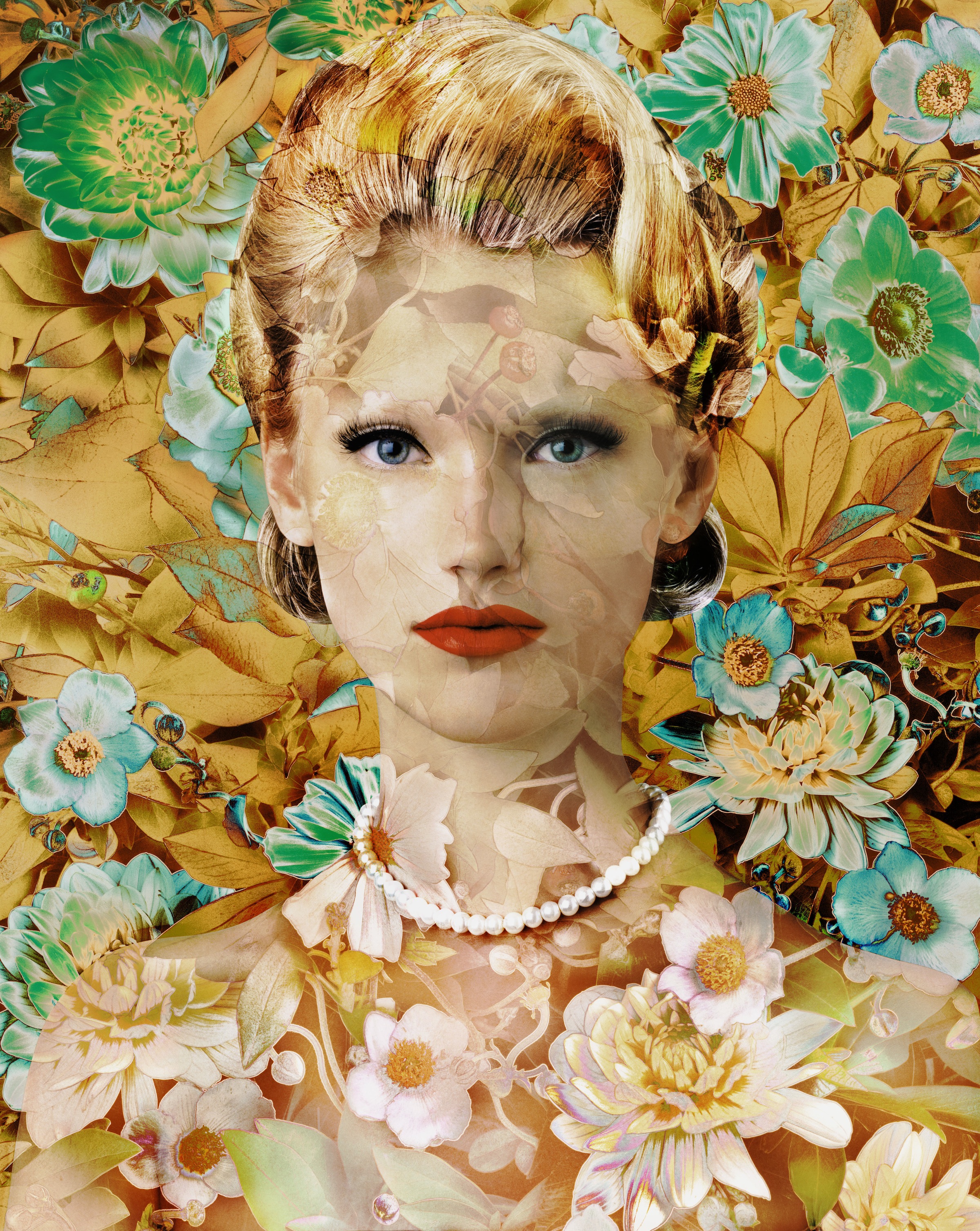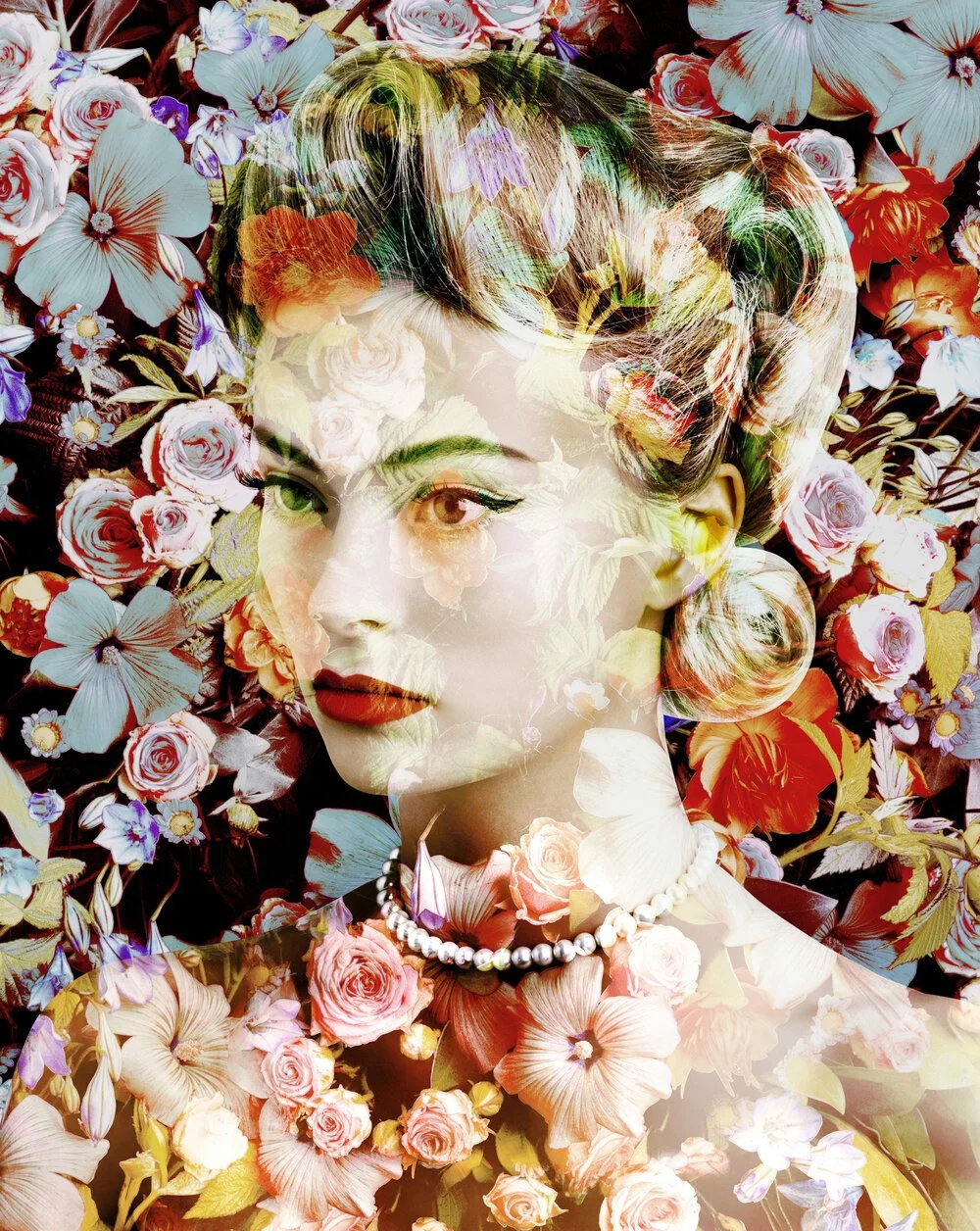The Archives: Valérie Belin
'Ananké' 2015 © Valérie Belin
Musée: When did you first start taking pictures?
Valérie Belin: I started taking pictures when I was a student in art school in France, in the mid-80s. My first influences were the American Minimalists. My first photographs were photographs of light, mirrors, and transparent objects.
M: There are some intentionally revealing details left on your mannequins. For instance, some of the joint lines are still visible on the mannequins’ arms. Why did you choose to leave those details?
VB: I have always aimed to photograph things “as they are”— ultimately, in the spirit of straight photography. The first photos of shop window mannequins that I took in 2003 are realistic. You could even call them hyperrealist. At first you think they’re portraits of living models, then you realize that it’s an illusion because of the telltale details of the textures and their imperfections. For the Super Models series, which I made in 2015, the mannequins are photographed naked. You can see the joints at the pelvis and on the legs. Mannequins are made to be dressed, so there’s something obscene about photographing them naked. These mannequins are in fact articulated puppets, and I show them as just that.
'Aura' 2015 © Valérie Belin
M: When did you start shooting mannequins in lieu of real people and why?
VB: I began by photographing objects: smashed-up cars, carcasses of meat, etc. In 1999, I started portraits of living models. These were highly stereotyped —bodybuilders, transsexuals, look-alikes, and girls from modeling agencies. I photographed these subjects as if they were inanimate objects — lifeless — because they themselves were reproductions of models. In 2003, I came around to photographing those models as if they were living persons. What I wanted to do was photograph living persons and objects in the same way.
'Aureole' 2015 © Valérie Belin
M: How do you alter the mannequins to get exactly what you’re looking for?
VB: I don’t make any alterations when I take the pictures. The mannequins are photographed as found. In the Super Models series, the artifice is to superimpose a geometrical motif over the image. This motif creates a perturbation. My method is to assemble the raw materials in a slightly brute way.
M: You tend to explore the concepts of perfection and falseness. When did these themes begin to emerge in your work?
VB: I started thinking about these themes when, for example, I photographed look-alikes. The subject aims for perfection, but it’s fake.
'Daylily' 2015 © Valérie Belin
M: What interests you about the idea of perfection as a construct?
VB: Any attempt to achieve perfection ends up with a grotesque representation. A look-alike is never perfect. It is ‘almost’ perfect. It’s the details that bring down the edifice of representation. Photography is an instrument of deconstruction, not to say demolition.
M: Your series Black-Eyed Susan features women that epitomize 1950s beauty. What interests you about beauty standards from that particular era?
VB: Without a doubt, it has to be the fact that, in those days, the stereotype was a dominant model of representation. That was also the era of our parents and of the films of Alfred Hitchcock, which conveyed the image of a certain kind of cold, glacial beauty.
M: Your fruit basket still-lifes are rich and painterly. What inspired this style?
VB: Painting has always been a source of inspiration for me and the still-life is a major genre in painting and the visual arts. In this particular case, I photographed real baskets of fruit, with genuine fruit, but the result looks very artificial. Yet I didn’t use any particular artifice, except perhaps the color. The fruits were so perfect that they seemed artificial.
'Ishtar' 2015 © Valérie Belin
M: How do you go about choosing objects for your still-lifes? To what extent is their arrangement planned and to what extent is it organic?
VB: I choose very banal objects, nothing precious; like ordinary consumer objects or useless gadgets. I then try to construct a still-life in the time-honored way, or according to tradition. That effectively results in organic compositions. When I photographed car engines in 2002, it was their organic appearance that interested me. I didn’t start trying to make my own compositions until later on.
M: What do you want your audience to come away with when they look at your work?
VB: I’m not trying to cause particular sensations. However, I do think that my photographs must give an ‘uncanny’ impression — to reference a very Freudian concept — when one looks at them. This feeling of unease comes from the doubt you experience when, for example, you fail to recognize your own reflection in a window or a mirror.
'Junita' 2015 © Valérie Belin
M: In the Crowned Heads series, your subjects’ faces are blurred. Why did you make this decision?
VB: I superimposed different poses for the same portrait. It’s a technique that has been used almost since the origins of photography. I used digital technology, but you could get the same result by superimposing film. The specificities of the medium have always been very important in my work and today the medium of photography is digital. It allows greater freedom in regards to abstraction.
M: Where did your series with the computers originate?
VB: I started using digital technologies in 2006, with my second series of models. What I first liked about digital technologies was that you could control the image at the printing stage. Then digital processing naturally came more and more to the forefront.
M: When did you first make the decision to produce work in color? How did that transition come about?
VB: It was precisely when I started using digital technologies that I began photographing in color. It was the natural choice to make, as it suited my subject and my project. I’m sure too that it was a kind of challenge.
M: You often deal with the subject of women in your work. What are you trying to say about, or towards women?
VB: Generally, what interests me is the representation of bodies and stereotypes. I have also photographed men (bodybuilders), male and female models, and transsexuals, people whose gender is more indeterminate. But, I think that the question of the model or stereotype concerns women more. I’m not trying to convey a particular message. It’s more to provoke a feeling of unease.
M: Tell me about your earlier series, like the one with the dresses in coffins. How do you look at these works ten years later?
VB: I see them as things that I have done and that, in a way, no longer belong to me. Let’s say they simply bring back memories. The only thing that interests me is the work that I’ll be doing tomorrow.
'Saffron' 2015 © Valérie Belin














